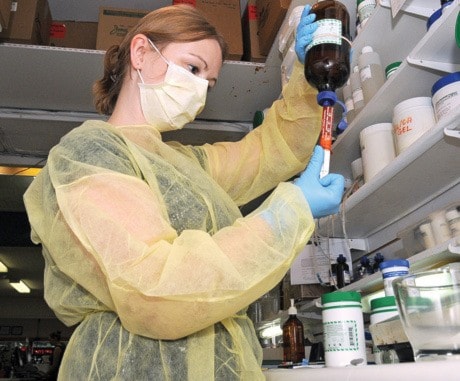Greater Victoria pharmacists are dealing with an extraordinary scarcity in certain injectable drugs.
While shortages are common occurrences in the health-care industry, the supply of anesthetics, narcotic pain relievers and other sedatives has dwindled since the country’s largest manufacturer, Sandoz, reduced output at its sole Canadian plant in February.
“It’s been an unusual or unique situation,” said Caren Heughan, Victoria pharmacist and B.C. Pharmacy Association board member. “But shortages are something we deal with on a regular basis.”
Heughan, who works at Victoria Compounding Pharmacy, said pharmacists often work around shortages by finding alternative forms of the medication in oral or capsule formats.
But in necessary cases, Heughan has been forced to contact drug manufacturers to access an emergency supply of hard-to-find medications.
“The manufacturer does have a small amount of these medications on allocation so the pharmacist can sometimes request emergency quantity,” she said.
The injectables shortage impacts hospitals as well, but the fear of postponed surgeries from a lack of anesthetics is unfounded, said VIHA spokeswoman Susan Evans.
“There’s been a shortage of drugs for a number of months, going back to February,” she said. “It’s an issue that really lies with the supplier.”
Sandoz Canada’s plant, located in Boucherville, Que., specializes in the production of specific injectable generic drugs.
The company secured a third-party manufacturer at the end of July and anticipates greater supply of anti-nausea, diuretic and pain management drugs soon.
“This alternative supply is expected to reach the market over the following months and will be available to Canadian patients before the end of 2012,” president Michel Robidoux said in a statement.
Heughan said pharmacists will continue to work with family doctors to provide adequate medication for regional patients, regardless of the shortage.
“It’s not the patient’s fault that the medication has become unavailable,” she said.
